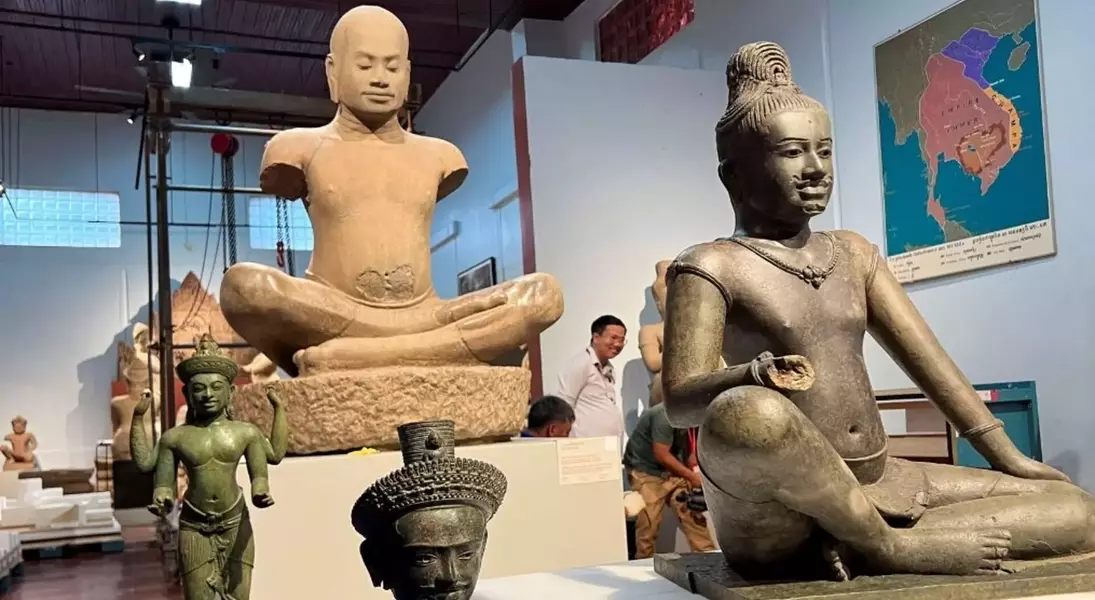Reclaiming Cultural Heritage: The Global Debate on Restitution
Many nations across Africa, Latin America, and Asia are demanding the return of historical artifacts and artworks from their former colonial occupiers. This has sparked a global discussion on the preservation and ownership of these cultural treasures. As developing countries strive to reclaim their heritage, the question arises: Can they effectively safeguard and maintain these centuries-old artifacts?Unlocking the Past, Shaping the Future
The Call for Restitution: A Rightful Reclamation
The demand for the restitution of cultural artifacts is a complex and multifaceted issue. For many nations that were once under colonial rule, the return of these historical objects represents a symbolic and tangible reclamation of their cultural identity. These artifacts, often looted or taken without consent, hold immense significance for the people and their heritage. By reclaiming these treasures, developing countries seek to not only preserve their past but also to empower their present and future.The restitution movement has gained momentum in recent years, with nations such as Nigeria, Egypt, and Greece leading the charge. These countries argue that the artifacts rightfully belong to them and that their former colonizers have a moral and ethical obligation to return them. The debate has sparked heated discussions, with proponents emphasizing the importance of cultural self-determination and the need to correct historical injustices.Preserving the Past: Challenges and Considerations
While the call for restitution is understandable, the practical challenges of preserving and maintaining these cultural artifacts cannot be overlooked. Many developing nations, despite their rich heritage, often lack the necessary resources, infrastructure, and expertise to properly care for and display these centuries-old artifacts.The issue of preservation is a complex one, as it involves factors such as climate, storage conditions, and specialized conservation techniques. Developing countries may face difficulties in providing the appropriate environmental controls, security measures, and skilled personnel required to ensure the long-term preservation of these delicate and irreplaceable objects.Furthermore, the repatriation of cultural artifacts can also raise concerns about their accessibility and public engagement. Some argue that keeping these artifacts in their current locations, often in well-established museums and institutions, may provide greater opportunities for global audiences to appreciate and learn from them.Collaborative Approaches: Bridging the Gap
To address these challenges, a collaborative approach between developed and developing nations may be the key to finding a balanced solution. This could involve partnerships and knowledge-sharing initiatives that empower developing countries to build the necessary capacity and infrastructure to care for their cultural heritage.Such collaborations could include the provision of technical assistance, training programs for conservation specialists, and the establishment of joint museum exhibitions and cultural exchanges. By working together, the global community can help ensure that these cultural treasures are preserved and accessible to all, while respecting the rightful ownership and stewardship of the countries from which they originated.The Evolving Landscape: Towards a Shared Understanding
The debate surrounding the restitution of cultural artifacts is an ongoing and complex one, with valid arguments on both sides. As the global landscape continues to evolve, it is crucial that all stakeholders, including governments, cultural institutions, and the public, engage in open and constructive dialogue to find sustainable solutions.By fostering a shared understanding of the importance of cultural heritage and the need for equitable access and preservation, the international community can work towards a future where the world's cultural treasures are celebrated and protected, regardless of their geographic origin. This collaborative approach can not only address the current challenges but also pave the way for a more inclusive and culturally diverse global landscape.

